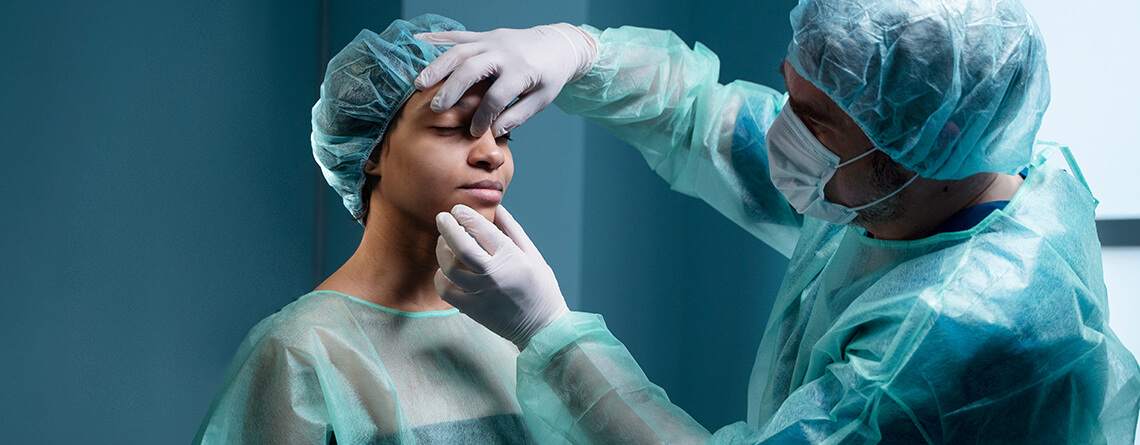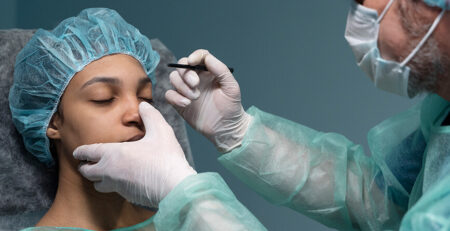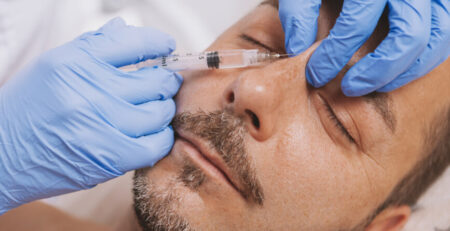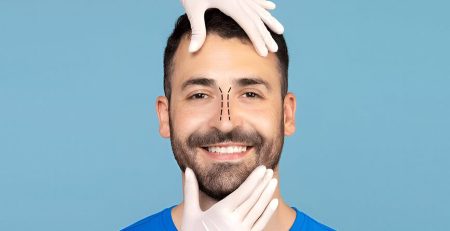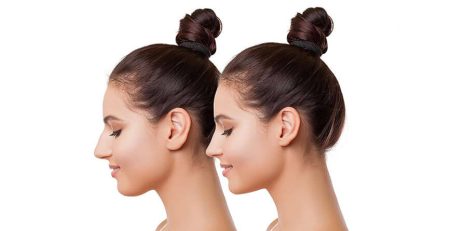Rhinoplasty: What to Expect Before and After A Nose Job?
Rhinoplasty, commonly known as a nose job, is a cosmetic surgical procedure that aims to reshape the nose to enhance its appearance and improve breathing function. It is one of the most popular plastic surgery procedures worldwide, with individuals seeking to refine their nasal features and achieve a more harmonious facial balance.
If you are considering rhinoplasty surgery or nose job, it’s important to understand what to expect before, during, and after the procedure.
Before the Procedure
The rhinoplasty preparation process typically involves:
Consultation: The journey to rhinoplasty begins with a thorough consultation with a qualified and experienced plastic surgeon. During this initial meeting, the surgeon will assess your facial features, discuss your aesthetic goals, and address any concerns you may have. They will also evaluate your overall health and medical history to ensure you are a suitable candidate for the procedure. Also, discuss the rhinoplasty recovery procedure and time.
Understanding Your Rhinoplasty Options: There are two primary approaches to rhinoplasty: open rhinoplasty and closed rhinoplasty. Open rhinoplasty involves an incision across the columella, the strip of skin separating the nostrils. This approach gives the surgeon greater access to the nasal structures, allowing for more precise and complex alterations. On the other hand, closed rhinoplasty utilizes incisions hidden within the nostrils, resulting in less noticeable scarring. The choice between open and closed rhinoplasty depends on the extent of the desired changes and the surgeon’s expertise.
Medical History: You will need to provide your surgeon with a complete medical history, including any allergies, medications you are taking, and any past surgeries. You may also undergo a physical examination and blood tests to ensure you are fit for rhinoplasty surgery/nose job.
Preoperative Instructions: Your surgeon will provide specific instructions to prepare for the procedure, such as avoiding smoking and alcohol and discontinuing certain medications.
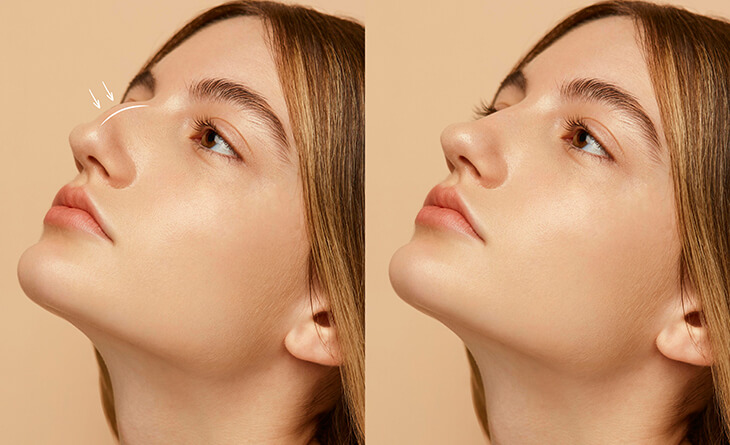
During the Procedure
Plan your transportation arrangements in advance to ensure a seamless rhinoplasty surgery experience and reduce stress, as you won’t be able to drive yourself home afterward. Bring essential items like comfortable clothing and any prescribed medications or supplements on the day of the procedure.
Anesthesia: Rhinoplasty is typically performed under general anesthesia, which means you will be asleep during the surgery.
Procedure: The type of rhinoplasty surgery/nose job you have will determine the specific procedure. However, most rhinoplasties involve incisions either inside the nose or across the columella, the strip of skin that separates the nostrils.
Reshaping the Nose: The surgeon will reshape the nose cartilage and bone to achieve the desired results. This may involve reducing or augmenting the size of the nose, straightening a deviated septum, or refining the tip of the nose.
Incision Closure: After completing the procedure, the surgeon will close the incisions and place a nasal splint on your nose to aid in healing your newly shaped nose. Additionally, nasal packs or soft plastic splints may be placed inside your nostrils to stabilize the septum.
After the Procedure
Following rhinoplasty surgery/nose job, you will be transferred to a recovery area for observation and monitoring for a few hours. You will then be able to go home, but you will need to have someone drive you.
Immediately After Surgery: You can experience swelling, bruising, bleeding and stiffness afterward. Your nose may also feel congested due to swelling and packing materials. However, these side effects are usually temporary and fade within two to three days. You may also experience mild to moderate pain, which can be managed with medication prescribed by your surgeon.
First Week After Surgery: After the first week, you can notice a significant reduction in swelling and bruising. Congestion should improve, but some nasal stuffiness may remain. Pain should be minimal, and you should be able to resume normal activities gradually.
First Month After Surgery: Most swelling should have resolved, but some minor swelling may still be present. Any remaining discoloration should be minimal and easily concealed with makeup. Nasal congestion should be largely resolved. Pain should be gone, and you should fully return to your normal routine. The sensation should have completely returned to the tip of your nose.
Tips for a Quick and Smooth Rhinoplasty Recovery
Here are a few steps that you can take for a quick and smooth recovery from a nose job:
Rest and Avoid Strenuous Activities: Get plenty of rest for the first few weeks after your surgery. Avoid strenuous activities, such as lifting heavy objects or exercising. This will give your body the time and energy to heal properly.
Elevate Your Head: Sleep with an extra pillow to keep your head elevated and reduce swelling. This will help to prevent fluid from pooling around your eyes and nose.
Apply ice Packs: Use ice packs for 15-20 minutes at a time, several times a day, to reduce swelling around your eyes and nose, promoting rhinoplasty recovery.
Avoid Blowing Your Nose: This can dislodge splints or stitches and prolong healing. If you need to clear your nose, gently use a tissue or saline solution.
Maintain A Healthy Diet: Eat a balanced diet of fruits, vegetables, and whole grains to promote healing. Your body needs nutrients to repair itself, so ensure you get enough of the right foods.
Follow Your Surgeon’s Instructions: Carefully follow all post-operative instructions provided by your surgeon for quick rhinoplasty recovery. This includes taking medication as prescribed, keeping your incisions clean and dry, and attending all follow-up appointments.
Avoid Smoking and Alcohol: Smoking and alcohol can slow down healing and increase your risk of complications. If you smoke, quit for at least two weeks before your surgery and six weeks after. Avoid drinking alcohol for at least two weeks before and after your surgery.
The overall rhinoplasty recovery time and final outcome may vary from patient to patient.
Planning for A Nose Job?
Rhinoplasty can significantly enhance facial appearance and improve breathing function. However, it is essential to understand the procedure’s details, potential risks, and realistic expectations. Carefully consider your goals, choose a qualified surgeon, and follow preoperative and postoperative instructions to maximize your chances of a successful rhinoplasty outcome.
If you are planning a rhinoplasty surgery/nose job, book your consultation with Dr Lokesh Handa, a board-certified plastic surgeon in Delhi. He will guide you through the entire procedure so that you can make an informed decision.

Dr. Lokesh Handa
M.S, M.Ch
Sr Consultant Plastic, Aesthetic and
Hair Transplant Surgeon
Dr. Lokesh Handa, a board-certified plastic surgeon with over 15 years of experience, holds esteemed titles of M.S. and M.Ch. He serves as a Senior Consultant in Plastic, Aesthetic, and Hair Transplant Surgery.
As the Director of Med Esthetiks, his commitment to excellence is evident. Dr. Lokesh Handa is a distinguished member of renowned organizations, including ISAPS (International Society of Aesthetic Plastic Surgeons), APSI (Association of Plastic Surgeons of India), and IAAPS (Indian Association of Aesthetic Plastic Surgeons). With extensive expertise, he blends precision and artistry, offering unparalleled care in the realm of plastic surgery and contributing significantly to the advancement of aesthetic practices.
To book an appointment, call: +91-8800203431 or email: care@medesthetiks.com

